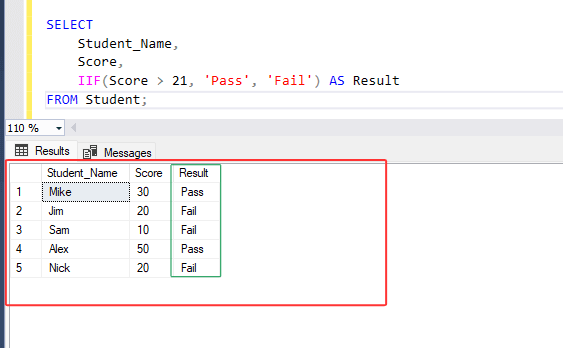Text copied!
IIF function
In SQL, the IIF function helps you choose between two values based on a condition. It allows you to perform a conditional evaluation.
It's similar to the CASE statement, with a simpler and shorter syntax for basic situations.
The syntax of the IIF function generally looks like this :
IIF(condition, value_if_true, value_if_false)
• condition is the expression that is evaluated.
• value_if_true is returned if the condition evaluates to true.
• value_if_false is returned if the condition evaluates to false.
Here's an example of how you might use the IIF function :
1. Let's assume we have a table named "[Student]".

2. Let's assume you want to pass students depending on their scores. If their score is more than 21, they pass; otherwise, they fail.
3. Run below SQL statement :
SELECT
Student_Name,
Score,
IIF(Score > 21, 'Pass', 'Fail') AS Result
FROM Student;
4. In the above statement, if the score is greater than 21 then the student is 'Pass' otherwise, 'Fail'.

The IIF function in SQL is like a smart helper that helps you make decisions in your database. It checks a condition for you, and then gives you one result if the condition is true, and another if it's false. It's handy when you need to choose between different values based on some condition.
Remember :
Using this function in a select statement won't modify the [Student] table directly, but it will only be reflected in the select statement's output.